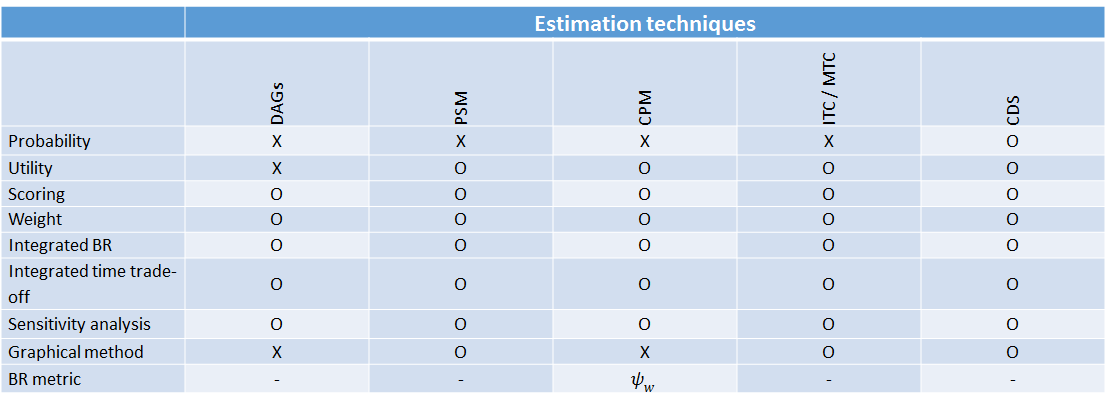Estimation techniques
Estimation techniques deal with how benefit-risk parameters/inputs are processed or analysed. They bring together the evidence of benefits and risks into a benefit-risk model, where commonly trade-offs are estimated. The inferences on benefit-risk trade-off are made on the resultant metrics having considered the evidence, data and assumptions. The choice of metrics to be used is not fixed therefore any sensible one from metric indices [link to metric indices section] can be used. They may also be applied within an appropriate benefit-risk framework
1. Operational characteristics

2. Comparative overview
 Discriminative scoring describes the number of different levels to distinguish the values (performance, preference etc.) associated with the consequences of each option employed by the scoring technique of a method: Low (<5levels), Medium (), High ( or on continuous scale), N/A = not applicable.
Discriminative scoring describes the number of different levels to distinguish the values (performance, preference etc.) associated with the consequences of each option employed by the scoring technique of a method: Low (<5levels), Medium (), High ( or on continuous scale), N/A = not applicable.
Level of complexity describes the technical difficulty in applying and/or understanding a method: Simple (low technical difficulty that does not require medical/statistical expertise and does not require specialist software to implement), Medium (mediocre technical difficulty that may need some but not extensive medical/statistical expertise and may require specialist software to implement), Complex (high technical difficulty that requires extensive medical/statistical expertise and may require specialist software to implement). N/A = not applicable
Number of options is the number of treatment options that can be compared simultaneously within a method. Typically a method assesses 2 options but it is not sufficient when there are multiple alternative treatments. N/A = not applicable.
Evidence data describes whether a method requires individual-level data or could be implemented using population summary data. N/A = not applicable.
Perspective for stakeholders suggests the type of stakeholders, to whom a method may be of interest and/or suitable. N/A = not applicable.
